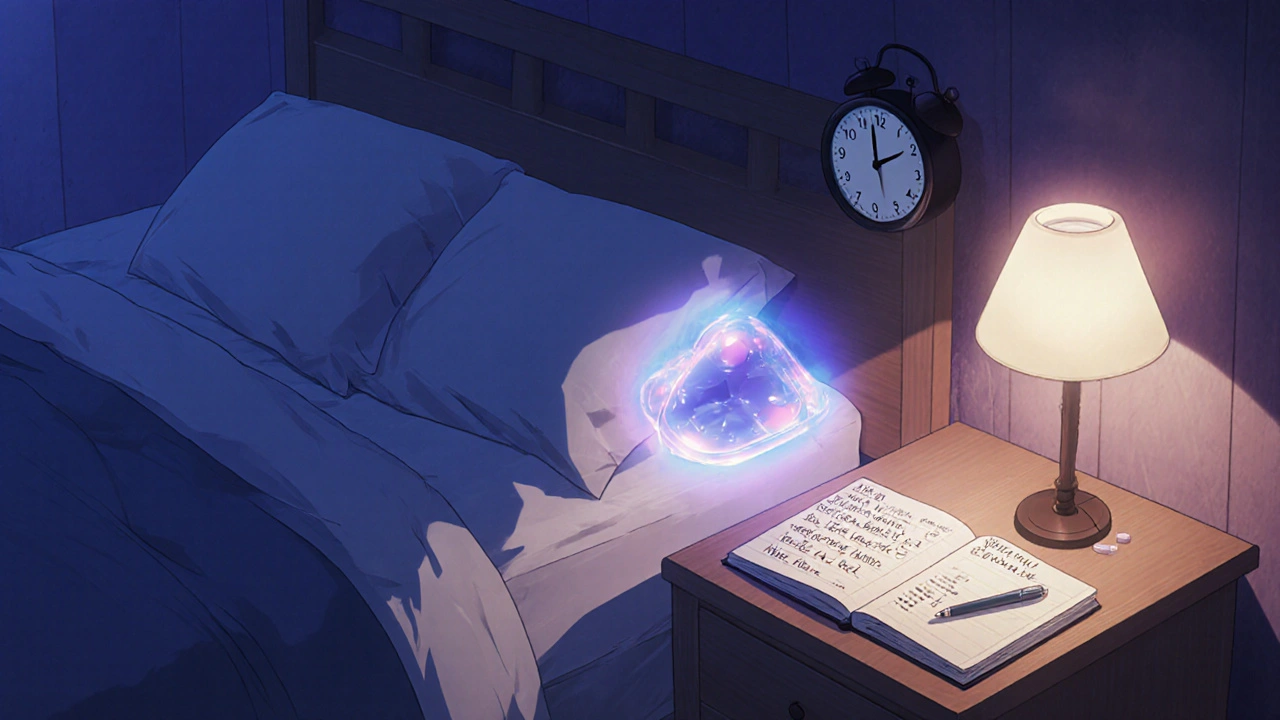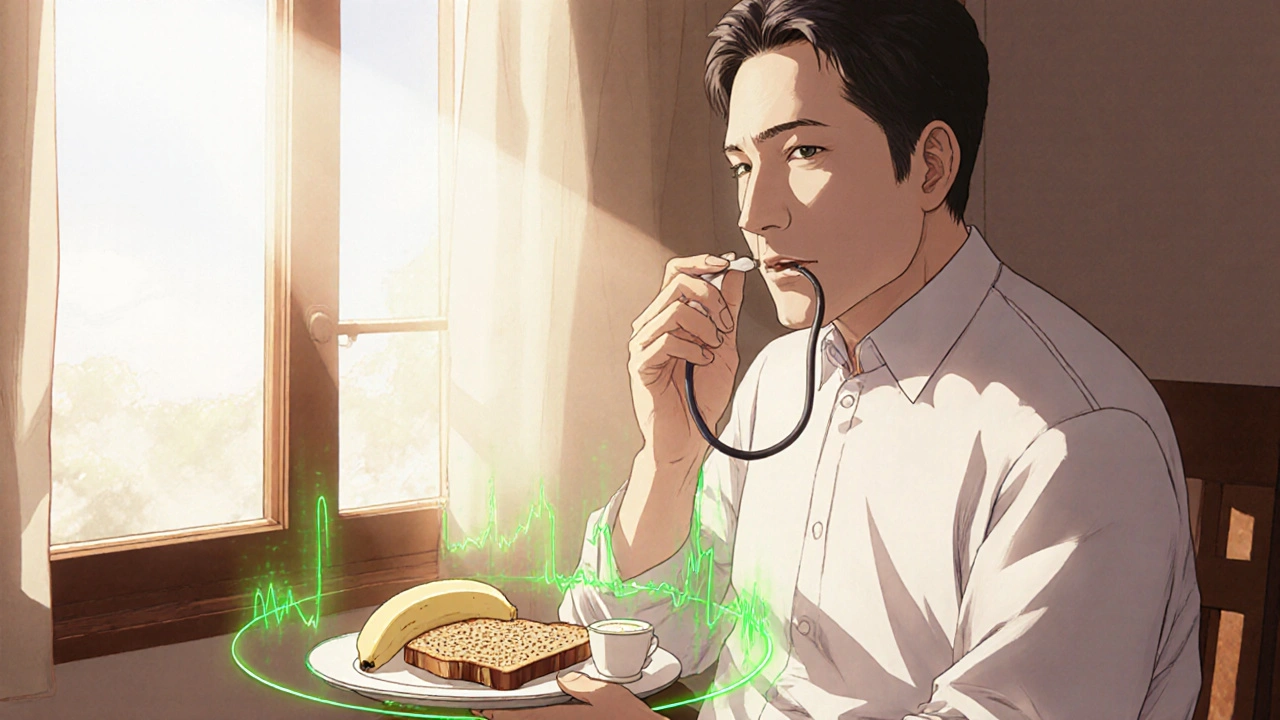Carvedilol is a beta-blocker used to treat high blood pressure, heart failure, and certain types of chest pain. It works by slowing your heart rate and lowering blood pressure, which takes pressure off your heart. But for many people, the benefits come with uncomfortable side effects-dizziness, fatigue, low blood pressure, or cold hands and feet. If you’re on carvedilol and feeling worse instead of better, you’re not alone. The good news? Most side effects can be managed, reduced, or even avoided with simple, science-backed strategies.
Start Low, Go Slow
One of the biggest reasons people struggle with carvedilol side effects is how fast they start the medication. Doctors often begin with a low dose-like 3.125 mg twice daily-but some patients are rushed into increasing it too quickly. That’s when dizziness, fainting, or extreme tiredness kicks in.
Research from the American Heart Association shows that patients who took 4 to 8 weeks to reach their target dose reported 40% fewer side effects than those who increased faster. If your doctor pushes you to increase the dose every two weeks, ask if you can stretch it to four. Give your body time to adjust. A slow ramp-up lets your cardiovascular system adapt without being overwhelmed.
Take It With Food
Carvedilol is absorbed differently depending on whether you take it on an empty stomach or with food. Taking it without food can cause a sudden spike in blood levels, which increases the chance of dizziness or low blood pressure-especially when standing up.
Studies show that taking carvedilol with a light meal or snack can reduce peak blood concentration by up to 30%. You don’t need a big meal. A banana, a slice of whole grain toast, or even a handful of nuts will do. Make it part of your routine: breakfast and dinner, always with food. This simple habit can cut down on those sudden drops in energy or lightheadedness.
Watch Your Salt and Fluid Intake
Carvedilol lowers blood pressure. But if you’re also drinking too much water or eating too little salt, your blood pressure can drop too far. This is especially true if you’re on a low-sodium diet for heart health and don’t realize you’ve gone too far.
Most adults need about 1,500 to 2,300 mg of sodium per day. If you’re eating mostly unprocessed foods-fresh vegetables, lean meats, whole grains-you’re probably fine. But if you’re avoiding salt entirely and feeling dizzy when you stand, you might need to add a pinch of sea salt to meals. Don’t overdo it, but don’t eliminate it either. Talk to your doctor about your sodium levels if you’re having frequent dizziness.
On the flip side, drinking huge amounts of water at once can also cause a drop in blood pressure. Sip water throughout the day instead of chugging a liter after a workout. Spread it out. Your body handles it better.
Timing Matters
Many people take carvedilol in the morning because they think it’s best to take blood pressure meds early. But carvedilol can cause drowsiness and fatigue, especially in the first few weeks. If you’re taking it once or twice a day and feel wiped out by mid-afternoon, try shifting your dose to the evening.
A 2023 study in the Journal of Clinical Hypertension found that patients who took their entire daily dose at bedtime reported 50% less daytime fatigue and fewer episodes of dizziness during morning activities. If you’re on two doses, try taking the larger one at night. That way, the sleepy side effects happen when you’re already resting.

Don’t Mix With Alcohol
Alcohol and carvedilol are a dangerous combo. Both lower blood pressure. Together, they can cause your blood pressure to plummet, leading to fainting, falls, or even heart rhythm problems.
Even one drink can make you feel lightheaded. If you’re on carvedilol, avoid alcohol completely-or at least limit it to an occasional glass of wine with dinner, and only after you’ve been stable on the medication for at least three months. If you’ve been drinking regularly before starting carvedilol, talk to your doctor about tapering off. The interaction isn’t just about feeling tired-it’s about safety.
Check for Drug Interactions
Carvedilol doesn’t play well with some common medications. If you’re taking other heart drugs, diabetes meds, or even over-the-counter cold remedies, you could be making side effects worse.
For example, combining carvedilol with certain calcium channel blockers (like diltiazem or verapamil) can slow your heart rate too much. Some antidepressants, like SSRIs, can increase carvedilol levels in your blood. Even herbal supplements like St. John’s Wort or magnesium can interfere.
Always give your pharmacist a full list of everything you take-including vitamins and supplements. They can flag dangerous overlaps. If you start a new medication and suddenly feel worse, it might not be carvedilol-it could be the new pill.
Move Gently, But Move
It’s tempting to sit still when you’re tired or dizzy. But inactivity makes carvedilol side effects worse. Your body gets used to being still, and then standing up-even after a short rest-can send your blood pressure crashing.
Regular, gentle movement improves circulation and helps your body adapt to the medication. Walk for 15 to 20 minutes a day. Do light stretching. Try seated leg lifts if standing is too much. A 2022 trial in patients with heart failure showed that those who walked daily had 35% less fatigue and fewer episodes of dizziness than those who stayed sedentary.
Don’t push yourself. Just keep moving. Your heart will thank you.

Monitor Your Symptoms Daily
Keep a simple log: write down how you feel each morning. Note dizziness, heart rate, energy level, and whether you’ve had any fainting spells. Use your phone’s notes app or a small notebook. Track it for two weeks.
This isn’t just for you-it’s for your doctor. If you’re consistently feeling dizzy at 10 a.m. but fine at 3 p.m., that’s a clue. Maybe your dose timing needs adjusting. If your heart rate drops below 50 bpm and you’re not an athlete, that’s a red flag. If your blood pressure is consistently below 90/60 and you’re dizzy, your dose might be too high.
Bring this log to every appointment. It helps your doctor make smarter decisions than guessing based on how you felt last month.
Know When to Call Your Doctor
Not all side effects are normal. Some mean something serious is happening.
Call your doctor right away if you experience:
- Severe dizziness or fainting
- Swelling in your ankles, feet, or legs
- Shortness of breath that’s worse than usual
- Slow heartbeat (under 45 bpm) with feeling weak or confused
- Signs of liver problems-yellowing skin, dark urine, constant nausea
These aren’t typical side effects. They could mean your body isn’t tolerating the drug, or there’s another issue. Don’t wait. Get help.
Give It Time-But Don’t Suffer
Many people stop carvedilol because side effects feel unbearable in the first few weeks. But for most, side effects fade after 4 to 8 weeks as the body adjusts. Don’t quit without talking to your doctor. Stopping suddenly can cause rebound high blood pressure or worsen heart conditions.
At the same time, you don’t have to live with constant dizziness or exhaustion. If side effects don’t improve after two months, or if they’re getting worse, your doctor might switch you to a different beta-blocker-like bisoprolol or metoprolol-or adjust your dose. There are options.
Carvedilol saves lives. But it shouldn’t ruin your days. With the right adjustments, you can get the benefits without the burden.
Can carvedilol cause weight gain?
Yes, some people gain a small amount of weight-usually 1 to 3 pounds-when starting carvedilol. This is often due to fluid retention, not fat gain. If you notice sudden weight gain (more than 2 pounds in a day), swelling in your legs, or trouble breathing, contact your doctor. These could be signs your heart failure is worsening, not just a side effect of the drug.
Is it safe to take carvedilol with coffee?
Caffeine can slightly raise your heart rate and blood pressure, which may counteract carvedilol’s effects. If you drink coffee, limit it to one cup in the morning. Avoid energy drinks or large amounts of caffeine. If you notice your heart racing or feeling jittery after coffee, cut it out. Many patients find their blood pressure stabilizes better without caffeine.
Why do I feel cold all the time on carvedilol?
Carvedilol reduces blood flow to your skin and extremities as part of how it lowers blood pressure. This can make your hands and feet feel cold, especially in winter. Wear warm socks, gloves, and layers. Avoid smoking-it narrows blood vessels too. If your fingers turn white or blue when cold, tell your doctor. You might have Raynaud’s phenomenon, which can be worsened by beta-blockers.
Can I exercise while taking carvedilol?
Yes, but start slowly. Carvedilol lowers your maximum heart rate, so you won’t feel the same intensity as before. That’s normal. Use perceived effort-not heart rate-to gauge exertion. If you’re breathing hard but can still talk, you’re in a good zone. Avoid high-intensity workouts until you’ve been stable for at least 6 weeks. Walking, swimming, and light cycling are excellent choices.
What happens if I miss a dose of carvedilol?
If you miss a dose, take it as soon as you remember-unless it’s close to your next scheduled dose. Never double up. Missing doses can cause your blood pressure to spike or your heart rate to race, which is dangerous if you have heart failure. Set phone reminders. If you forget often, ask your doctor about a once-daily extended-release version.
If you’ve been on carvedilol for a while and still feel off, don’t assume it’s just part of the deal. Talk to your doctor. Small changes in timing, diet, or dosage can make a big difference. Your goal isn’t just to survive the medication-it’s to feel better while taking it.

